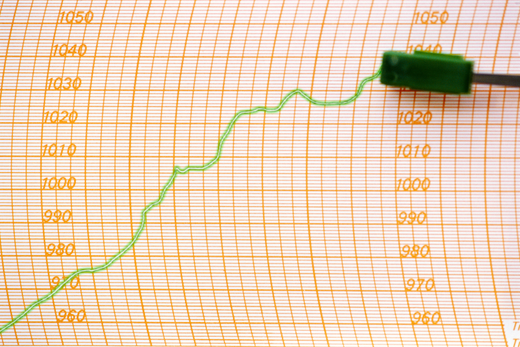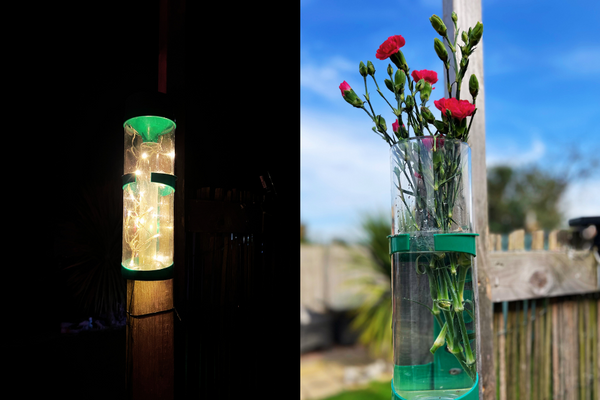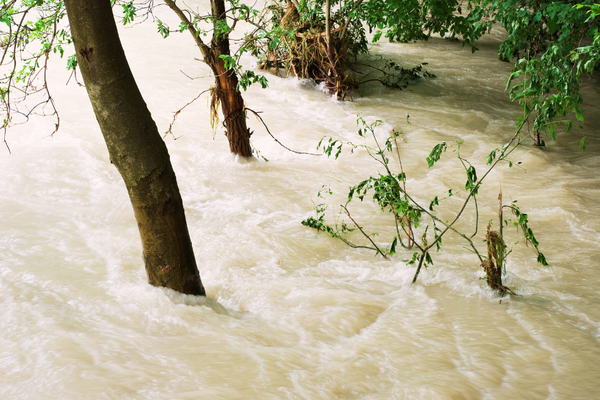Tempted to Photocopy Your Barograph Charts?

3 minute read
Meteorology is a hobby with accuracy at its core; after all, if our readings are not accurate, why take them in the first place? One of the most enjoyable instruments to have at home is a barograph. Barographs are a great way to record exceptionally accurate pressure readings for your location. With weekly chart changes, you and your barograph can amass weather records spanning decades, highlighting pressure changes during notable storms, as well as providing a visual representation of the changes in weather patterns over time for your microclimate.
Barographs do not require a great deal of maintenance to sustain their accuracy, due to the sophisticated and intricate mechanisms within them. What they do, require, however, are high-quality consumables such as barograph ink, barograph charts, and often gummed barograph tape to hold the chart in place.
Over the years at Metcheck, we occasionally come across enquiries from customers looking to troubleshoot smudging on their barograph charts. In nearly all instances, this is due to incompatible consumables being used, or poor-quality consumables. The culprit is often photocopied barograph charts.

In theory, photocopying your existing barograph chart seems like a great short cut to save a few pounds, but unfortunately it can result in a number of issues. Read on to find out what can go wrong:
1. Photocopies Lack the Required Paper Quality
Barograph charts are made of a particular grade of durable paper that cannot be replicated with home printer paper. The paper needs to be thin enough to wrap around the barograph drum, but not too thin that the ink seeps through. Photocopies lack the necessary film to ensure a clear barogram and to ensure that the ink rests on the surface of the paper, rather than sinking into it, making it easier to obtain a continuous trace. If the trace on the barogram is too thick, it is not possible to accurately read off the recorded measurements. Equally, a smudge on a barogram makes it impossible to decipher the data from that time period, and possibly other recorded time periods too. We cannot go back in time to re-record the weather conditions from a particular time period, so if your weather data is important to you, risking the validity of an entire chart (which could be an entire week's worth of recordings) by using poor-quality consumables, is not recommended.
2. Barograph Ink is Uniquely Formulated
Barograph ink is a special slow-drying/slow-evaporating product that has been specifically designed for chart recorders. The ink is required to be slow drying to ensure that it doesn't dry out in the metal barograph pen nib, as roughly one drop is added each week to the nib to last approximately seven days. The slow-drying ink does, however, mean, that paper compatibility is a key issue. A wet, slow-drying ink would indeed smudge on papers that are not specially created for this type of ink. Using ink not designed for chart recorders, such as fountain pen ink, can also lead to smudged charts, a clogged barograph pen nib, and a big mess!
3. Compatibility is Key: Ink Needs to be Adhered to Paper
As much as the chart and ink are important independently, compatibility is a big issue. It is best practice to purchase both charts and ink from the same supplier to ensure the two work in harmony together. Mixing suppliers, using a photocopied chart with genuine barograph ink, or a genuine chart with another type of ink, will interfere with the recording of your barograph, and obtaining proper data could be impossible.
Photocopying barograph charts may seem like a quick fix, but it can lead to inaccurate readings, ink smudging, and messy results. To ensure precise and reliable atmospheric pressure recordings, always use the correct chart paper and ink from an approved specialist such as Metcheck. We have a wide range of barograph accessories to choose from.
Unsure which chart is suitable for your barograph? Feel feel to contact us via email or telephone and we'll be more than happy to help!
Also in Metcheck News

Dry Days? Try These Rain Gauge Hacks This Spring
Rain in short supply? Don’t let your rain gauge sit idle! Here are some unexpectedly fun ways to put it to use during a dry spell.

Closing the Early Warning Gap with Metcheck
Extreme weather events are becoming more frequent and severe, making early warnings crucial. Unfortunately, access isn't universal.

Sunshine or Shadows? The Groundhog Decides
Will it be 6 more weeks of winter or will there be an early spring? Read on to find out more about this North American tradition.
